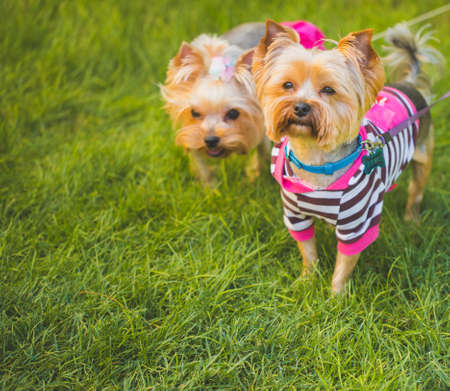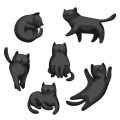Introduction: The Importance of Indoor Exercise for Dogs
Keeping your dog active is essential for their overall health and happiness, but sometimes outdoor walks or trips to the park just aren’t possible. Whether it’s due to rainy weather, snowy conditions, scorching heat, or a packed family schedule, indoor exercise can play a crucial role in your dog’s routine. Regular physical activity helps maintain a healthy weight, supports joint health, and reduces the risk of chronic diseases. Just as importantly, indoor activities provide much-needed mental stimulation that can prevent boredom-related behaviors like chewing or excessive barking. By finding creative ways to keep your pup moving inside the house, you’re not only protecting their body but also supporting their emotional well-being—no matter what life throws your way.
Fun Indoor Games for Your Dog
Keeping your dog active indoors is not only important for their physical health but also for their mental well-being. When outdoor adventures aren’t possible, fun and interactive games can help channel your pup’s energy in positive ways. Here are some easy and engaging games you can play with your dog right at home:
Hide and Seek
This classic game isn’t just for kids—dogs love it too! Simply have your dog stay in one room while you hide in another spot. Call your dog’s name and let them search for you. You can also hide treats or favorite toys around the house to encourage your pup’s natural sniffing instincts and keep their mind sharp.
Tug-of-War
Tug-of-war is a fantastic way to burn off energy and build a strong bond with your dog. All you need is a sturdy rope toy or tug toy. Make sure to play gently, especially with puppies or smaller breeds, and always supervise to ensure safety. This interactive game helps teach impulse control when you ask your dog to “drop it” or “leave it.”
Indoor Fetch
If you have a hallway or open space, indoor fetch can be just as exciting as playing outside. Use a soft ball or plush toy to avoid breaking anything around the house. Start with short throws and gradually increase distance as your dog gets comfortable. Fetch helps improve agility and provides great cardiovascular exercise.
Comparison of Indoor Games
| Game | Physical Activity Level | Mental Stimulation | What Youll Need |
|---|---|---|---|
| Hide and Seek | Moderate | High | Treats, toys, hiding spots |
| Tug-of-War | High | Moderate | Rope or tug toy |
| Indoor Fetch | High | Low-Moderate | Soft ball or plush toy |
Pro Tip:
Rotate between these games throughout the week to keep things fresh and exciting for your pup. Each game offers different benefits, so mixing them up will help maintain both their enthusiasm and overall health.

3. Creative Ways to Use Household Items
Keeping your dog entertained indoors doesn’t have to mean buying expensive toys or equipment. With a little creativity, you can turn everyday household objects into fun and effective exercise tools for your pup. Here are some easy ideas that fit right into American homes:
DIY Agility Course
Set up a simple agility course in your living room or hallway using chairs, broomsticks, cushions, and laundry baskets. Line up chairs and drape a broomstick across them to create a hurdle for your dog to jump over, or use couch cushions as stepping stones for balance practice. You can even lay out towels to mark “safe zones” or “finish lines.”
Interactive Toy Substitutes
Turn old t-shirts or socks into tug toys by braiding them together tightly. Fill empty plastic water bottles with kibble or treats, then punch a few holes so your dog has to roll the bottle around to get the food out—just supervise playtime for safety. Cardboard boxes make great tunnels or hide-and-seek spots for curious pups.
Homemade Fetch Games
If you have a hallway, crumple up paper into a ball or use a soft plush toy for a gentle game of indoor fetch. This keeps your dog active without risking damage to your furniture.
Safety First
Always double-check that homemade equipment is sturdy and free from small parts that could be swallowed. Supervise your dog during play, and adjust activities based on their age and energy level.
By transforming household items into playful challenges, you’ll not only keep your dog physically active but also mentally engaged—all while having fun together at home!
Training Sessions as Mental and Physical Exercise
Practicing commands and teaching your dog new tricks indoors isn’t just about obedience—it’s also a fantastic way to keep your pup mentally stimulated and physically active, especially when outdoor options are limited. Dogs thrive on learning; engaging their brains can be just as tiring as a long walk, helping to reduce boredom, anxiety, and unwanted behaviors.
Why Training Indoors Matters
Indoor training sessions allow you to work with your dog no matter the weather or your living situation. By turning daily routines into learning opportunities, you’re providing both exercise and mental enrichment. Plus, these sessions strengthen the bond between you and your furry friend while reinforcing good manners in a comfortable environment.
Benefits of Indoor Training Sessions
| Benefit | Description |
|---|---|
| Mental Stimulation | Keeps your dog’s mind sharp by introducing new challenges and problem-solving tasks. |
| Physical Activity | Encourages movement through activities like sit, stay, fetch, or agility-based tricks. |
| Improved Behavior | Reduces restlessness and unwanted habits by providing a structured outlet for energy. |
| Bonding Time | Strengthens the relationship between you and your pup through positive interaction. |
Easy Tricks and Commands to Start With:
- Basic Obedience: Sit, Stay, Come, Down—great for beginners of all ages.
- Fun Tricks: High five, spin in a circle, roll over, or play dead—these add excitement and challenge.
- Nose Work: Hide treats or toys for your dog to find using their sense of smell.
- Obstacle Courses: Use household items like chairs or cushions to create indoor agility circuits.
The key is to keep sessions short (5-10 minutes) and positive, using treats or favorite toys as motivation. Rotate activities regularly to maintain interest. Indoor training isn’t just about burning energy—it’s an investment in your dog’s happiness and well-being while keeping them healthy at home.
5. DIY Indoor Obstacle Courses
Creating an indoor obstacle course is a fantastic way to keep your dog active and mentally stimulated, especially when outdoor time is limited. No matter the size of your home or apartment, you can design a fun and safe environment that encourages exercise and play.
Start with Safety First
Before setting up your course, make sure the area is free from sharp objects, slippery rugs, or breakables. Use baby gates or closed doors to define the play zone and prevent any unwanted escapes or accidents.
Get Creative with Everyday Items
You don’t need fancy equipment to build an engaging course. Household items like chairs, couch cushions, broomsticks, laundry baskets, and blankets can easily transform into tunnels, hurdles, and weaving poles. For example:
- Use two sturdy chairs and a broomstick to create a jump bar at a comfortable height for your pup.
- Lay out towels or yoga mats as “safe zones” where your dog can pause or perform tricks.
- Drape a blanket over two chairs for a cozy tunnel to crawl through.
Design for All Spaces
Whether you live in a spacious house or a compact apartment, adjust the size of your obstacle course accordingly. In smaller spaces, focus on activities that require less running but more agility and problem-solving—like weaving between cones (or water bottles) or stepping over low bars.
Encourage and Supervise
Guide your dog through each part of the course with treats, toys, or verbal praise. Always supervise playtime to ensure safety and help reinforce good behaviors. Change up the layout every few days to keep things fresh and interesting for your pup.
Benefits of Indoor Obstacle Courses
This type of activity not only provides physical exercise but also challenges your dog’s mind, helping to reduce boredom-related behaviors like chewing or barking. Plus, it’s a great way for you and your furry friend to bond while staying active together—rain or shine!
6. Calming Activities for Energy Release
Sometimes, our dogs need more than just physical exercise—they also crave mental stimulation and calm ways to release energy indoors. Here are some soothing yet effective activities that can help your pup stay engaged while promoting a sense of relaxation.
Interactive Toys
Interactive toys, such as treat-dispensing balls or automated fetch machines, encourage your dog to think and move at the same time. These toys keep your furry friend entertained for extended periods and offer a great way to burn off extra energy in a controlled manner, especially on rainy or chilly days.
Puzzle Feeders
Puzzle feeders are fantastic tools for mealtime enrichment. By hiding kibble or treats within these devices, you challenge your dogs problem-solving skills and slow down their eating. This not only makes mealtimes last longer but also provides excellent mental stimulation to tire them out in a positive way.
Scent Games
Scent games tap into your dogs natural sniffing instincts. Hide small treats around the house or use scent-specific toys to encourage your pup to search and find rewards. You can make it a fun game by giving clues or creating little “treasure hunts.” Scent games are mentally enriching and offer an ideal indoor activity for dogs who love using their noses.
Benefits of Calming Energy Release
These calming activities do more than just occupy your dog—they help reduce anxiety, prevent boredom-related behaviors, and promote overall well-being. Providing a healthy outlet for your pup’s energy indoors supports both their mental and emotional health, making for a happier home environment.
7. Safety Tips and Monitoring Your Dog’s Activity
When it comes to indoor exercise, your dog’s safety and well-being should always come first. While keeping your pup active at home is essential, it’s equally important to prevent injuries or overexertion. Here are some key tips to ensure your furry friend stays safe and healthy during indoor play:
Start Slow and Know Your Dog’s Limits
Every dog has a different energy level and physical ability, which can vary by age, breed, and health status. Begin new activities gradually, especially if your dog isn’t used to vigorous indoor play. Watch for signs of fatigue or discomfort such as excessive panting, limping, or reluctance to continue playing. If you notice any of these, give your pup a break and offer fresh water.
Create a Safe Play Environment
Clear the space where you’ll be exercising with your dog. Remove slippery rugs, sharp objects, or furniture with hard edges that could cause injury. Use non-slip mats if necessary and make sure the area is big enough for your chosen activity without overcrowding.
Use Appropriate Toys and Equipment
Choose toys that are safe for indoor use—avoid anything too hard or small that could become a choking hazard. Opt for soft balls, tug ropes, or puzzle toys designed for dogs. Always supervise playtime with new toys to ensure they’re being used safely.
Monitor for Overexertion
Dogs can sometimes get overly excited during play, especially in a confined space. Watch closely for heavy breathing, drooling, stumbling, or sudden stops in activity. If your dog shows any of these signs, end the session and allow time to rest. Remember: short but frequent play sessions are better than one long session indoors.
Consult Your Veterinarian if Needed
If your dog has any pre-existing health conditions or mobility issues, talk with your vet before introducing new forms of exercise at home. Your veterinarian can help you design a safe routine tailored to your pup’s needs.
Keeping an eye on your dog during indoor exercise ensures not only fun but also safety—helping your best friend stay happy and healthy no matter the weather outside!


